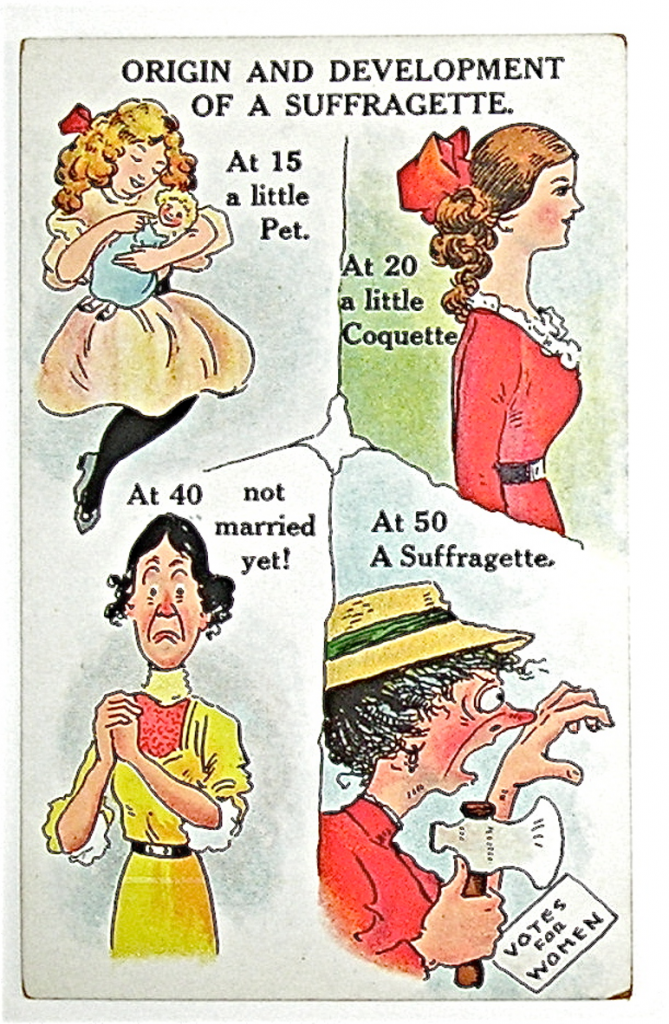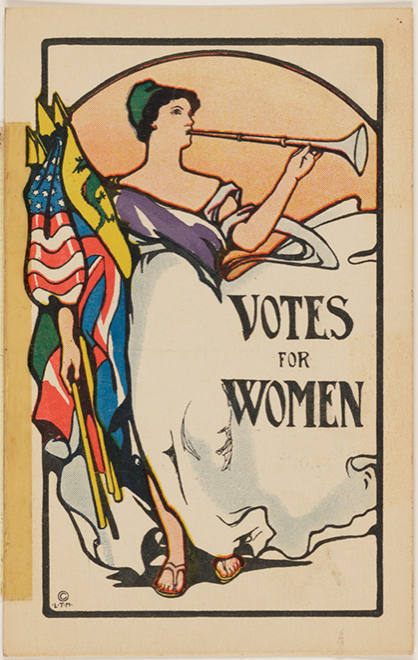A visionary Surrealist, Remedios Varo’s fantastical paintings of androgynous creatures engaged in alchemy, magic, and the occult arts continue to confound and inspire.
Her work often depicts her sitting at a desk, engaged in mystical work, going on a journey to reveal true meaning, or seemingly disappearing into the background environment that envelops her. Bodies merge with objects and animals to assume captivating new hybrid beings. In Creation of The Birds (1957), the central figure is a human-owl hybrid who is painting birds that animate and fly off the page, with paint from a nearby machine that resembles an insect that deposits colors onto her palette. These dreamlike creations became part of Varo’s modernist mythos — she, along with the rest of the Surrealists, invoked occult imagery to test viewers’ understanding of their reality. Weaving in themes of witchcraft, which has continued to make a comeback as a counterpoint to our tumultuous times, Varo’s magical paintings continue to resonate powerfully today.
Salvador Dalí. Man Ray. Marcel Duchamp. Rene Magritte. Max Ernst. Hans Arp. Yves Tanguy. The names most often associated with Surrealism are (surprise, surprise) all men — making the re-emergence of female Surrealist artists’ work all the more important. A learned naturalist, alchemist, and seeker of knowledge, Varo’s dreamscape paintings were introspective depictions of her reality. She created her profoundly intuitive and magical works in the hopes of inspiring more individual balance in an increasingly interconnected world. Varo was a deep admirer of Hiëronymus Bosch, whose mysterious surrealistic paintings pre-date Surrealism by about 500 years. While her work is steeped in depictions of spirituality, many of Varo’s figures are based on a subject close to the artist — her body. Many of her characters are approximations of herself, and when Varo painted women, they were typically strong and self-determined, depicted as heroines or mythical characters, in charge of their own mystical destinies. They populated symbolic worlds inhabited by machines, magical hybrid creatures, where objects come to life.
Born Maria de los Remedios Alicia Rodriga Varo y Uranga in 1908, in Spain, Varo played a vital role in the Mexico City-based Surrealist movement. Her enigmatic paintings of androgynous creatures and strange humans engaged in alchemy, magic, and occult arts also included architectural features that show off her expert drafting skills, which she learned from her engineer father.
Varo was raised in a well-educated family — her father, a hydraulics engineer, recognized her artistic talent early on and taught her technical drawing when she was young. Because of her father’s work, the family moved to different locations across Spain and North Africa before finally settling down in Madrid in 1917, where she attended Catholic school and later pursued art at the Royal Academy de Finas Artes de San Fernando, graduating in 1930 with a degree to teach art and drawing.
It was in the mid-1930s, when living in Barcelona, that Varo became involved in Surrealism, joining the avant-garde artists’ group Logicophobista. In 1936, she met the Surrealist poet Benjamin Péret. Together, they fled Spain for Paris and married in 1937. They were soon drawn into the Surrealist world there, and Varo exhibited her art at shows with the group and published work in French Surrealist publications.
The couple fled again, in late 1941, to escape Nazi-occupied France — this time to Mexico City, where they connected with local writers like Octavio Paz, along with other exiled artists, among them Gordon Onslow Ford, Wolfgang Paalen, and Leonora Carrington, who became Varo’s best friend. Her first pursuits in Mexico City were in commercial art, costume design, and pre-Colombian pottery restoration. She only began to devote her time wholly to painting in 1953, after she had separated from Péret and became romantically entwined with Austrian businessman Walter Gruen, who supported her art-making.
The close friendship with Leonora Carrington, another Surrealist, was a deeply important one. They were tuned into a shared ancestral and evolutionary feminine consciousness that informed their desire to free women from repressive patriarchal systems, often depicted in Varo’s work through the repeated motifs of a cage and tower, or figures bound to machines or contraptions. Their work is rich in similarities, though Carrington was the better-known of the two. Both relished themes steeped in the occult, mystical worlds, and anthropomorphosis (humanization of animals) — and their artworks have even been misattributed to one another. The two wrote fairytales, invented Surrealistic potions and recipes, and influenced one another’s work. They sometimes engaged in elaborate pranks, like putting ink in tapioca pearls to serve as caviar at soirees, to guests like the renowned poet, Octavio Paz.
Carrington’s friendship provided security for Varo — who was often uneasy and superstitious — and reflects an inherent desire in female artists to create supportive networks. Reflecting Varo’s popularity beyond the art world and among the general public (at least in Mexico), her work has taken on an extensive cultural life.
Even the iconic Madonna is inspired by Varos. Her Surrealist paintings are the inspiration for the pop star’s legendary 1995 Bedtime Story video. Madonna says the following about the video (the second most expensive ever produced after Scream by Janet and Michael Jackson):
My “Bedtime Story” video was completely inspired by all the female Surrealist painters like Remedios Varo and Leonora Carrington. There’s that one shot where my hands are up in the air, and stars are spinning around me. And me flying through the hallway with my hair trailing behind me, the birds flying out of my open robe — all of those images were an homage to female Surrealists.
The Bedtime Story music video director, Mark Romanek, recounts his first encounter with Madonna. At the time, she was redecorating her home and living in a hotel. The only thing that she had taken from her house to the hotel was a single piece of surrealist art by a female painter. He didn’t mention which artist or painting, only that it was purple — but from that moment, he knew that he and Madonna had to create a music video that paid homage to the artistic influence of the female Surrealists.
Remedios Varo created the bulk of her work in the last ten years of her life, which was cut short by a heart attack at 54. It was not until the last 13 years of her life — after having fled war-torn Europe, finding a home in Mexico with other displaced Surrealists — that she finally became free of the financial yoke that had previously kept her from painting full-time. Varo had a well-received solo exhibition premiere in Mexico City in 1956, continuing to exhibit after that.
Varo and her art became legendary in Mexico following her death. Mexican art critics of the publication Novedades called her “one of the most individual and extraordinary painters of Mexican art.” A major art book, Obras de Remedios Varo, was published following the first retrospective of Varo’s work and sold all of its three subsequent printings, becoming a highly coveted collector’s item. Her haunting and iconographic work is now in the collections of major museums like the Museum of Modern Art in New York and collected by the likes of Madonna. Remedios Varo is now considered among the most eminent and influential Surrealist artists of the 20th century — her haunting and mystical work continuing to strike a powerful chord.
About the author.
An award-winning creator and digital health, wellness, and lifestyle content strategist — Karina writes, edits, and produces compelling content across multiple platforms — including articles, video, interactive tools, and documentary film. Her work has been featured on MSN Lifestyle, Apartment Therapy, Goop, Psycom, Pregnancy & Newborn, Eat This Not That, thirdAGE, and Remedy Health Media digital properties.

 Image credit:
Image credit:  Image credit:
Image credit: